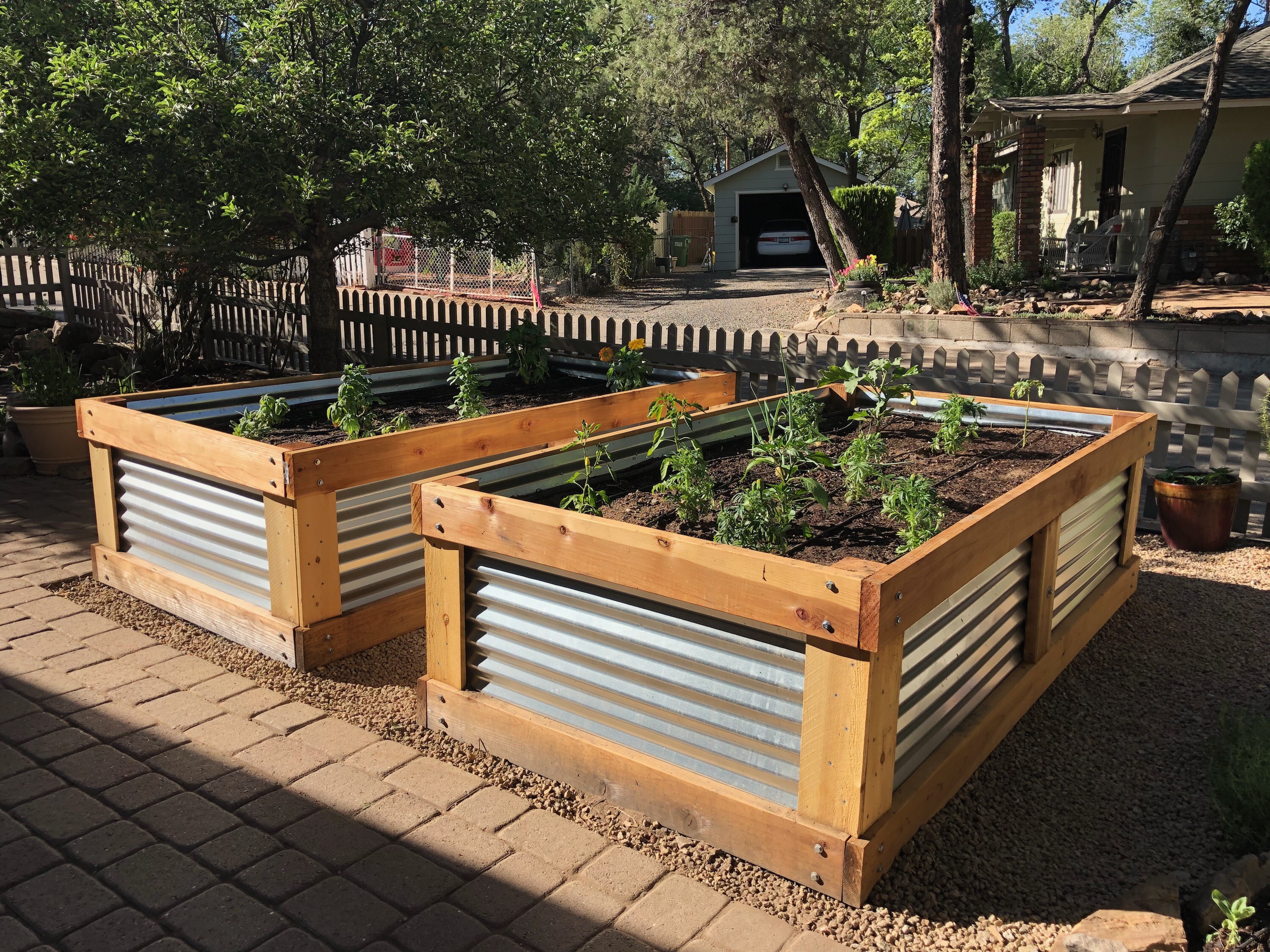 Raised Bed Construction - April 8, 2020 Jeff Schalau, Agent, Agriculture & Natural Resources University of Arizona Cooperative Extension, Yavapai County Many people are currently planning and creating new garden spaces as we physically distance ourselves in coping with COVID-19. The rockiness and steep slopes of northern Arizona’s upland areas can make it very challenging to grow annual flowers and vegetables. Where soils do exist, rocks can be removed and the soil amended, but often, the amount of rock or the presence of shallow bedrock make this very challenging. Here, gardeners have little other choice than to use containers and/or raised beds. Containers vary greatly in size, materials, cost, and provide a limited amount of growing space. For dedicated gardeners without a natural garden plot, raised beds are often the best option. Although there will be initial expense and labor in constructing raised beds, the finished product should last for many years and provide useable growing space. The choice of framework for walls depends on the availability and expense of the construction material, as well as the desired appearance of the final product in the landscape. Naturally rot-resistant lumber, such as redwood or cedar, may also be used. If you have an ample supply of native rock onsite, it can be dry-stacked or mortared together. Other possibilities include sheet metal, wood, concrete blocks, bricks, or synthetic lumber made of recycled plastic. National gardening publications have raised concerns about the safety of using treated lumber for raised beds in food gardens. The US Environmental Protection Agency phased out the consumer/residential use of lumber treated with arsenic containing compounds in 2003 and those treatments have been modified to use copper containing compounds. Similar concerns exist for creosote and the use of railroad ties for use in raised beds for food production. After reviewing the available information, I would recommend that copper treated lumber be used where another material, such as galvanized sheet metal, is in direct contact with the soil. I have included a link to raised bed plans constructed of treated lumber and corrugated sheet metal with the online edition of this column. Raised beds can vary depending on the gardener's goals and the topography. Hillside terraces may require different bed dimensions than those used for flat-land vegetable gardens. On hillsides, follow the contour of the land and adjust the depth of beds according to the slope of the hill. On flat ground, you can be more creative. Make sure pathways are wide enough to allow equipment and/or wheelchair access depending on your goals and needs. My garden is on a gentle slope and uses a 25’ x 18’ perimeter wall of dry-stacked granite that was gathered onsite to create one large terrace. A convenient width to use for raised beds is 4 feet. Here, the center of the bed is accessible from either side. Lumber for constructing beds is readily available in 4-foot length multiples, minimizing the amount of sawing necessary and the amount of waste produced during construction. If the bed is accessible only from one side, limit the width to 3 feet. Most gardeners find it uncomfortable to reach farther than 3 feet to tend the bed. Bed height can vary, but 18 to 24 inches is fairly common. The length of a raised bed is not critical. However, you should divide long distances into shorter beds (24 feet is probably a good maximum length). Three-foot-wide walkways are usually adequate. These can be mulched with weed barrier and/or wood chips to minimize weeds. If pocket gophers are present, place hardware cloth in the bottom before filling with soil. After you have built your raised beds, you are faced with finding suitable soil to fill it. This can be a difficult decision and quality topsoil may be challenging to locate and expensive. Bagged products are expensive and often contain lots of organic materials and lack actual mineral soil. This is an important decision. Rather than explaining any further here, you may read my column titled Soil Tips for Raised Beds from April 25, 2018 (a link is provided with the online edition). Remember to construct enough bed space to allow for crop rotation. Crops of certain plant families need to be rotated with crops in other families to avoid the incidence of disease and other pests. It can be challenging to have one small raised bed filled with tomatoes and peppers every year without eventually running into disease issues. Remember to visit the online edition for additional resources (see URL below). You can follow the Backyard Gardener on Twitter – use the link on the BYG website. If you have other gardening questions, call or email the Master Gardener help line in the Prescott (928-445-6590/prescottmg@gmail.com) or Camp Verde (928-554-8992/verdevalleymg@gmail.com) and be sure to include your name, address and phone number. Find past Backyard Gardener columns or provide feedback at the Backyard Gardener web site: http://cals.arizona.edu/yavapai/anr/hort/byg/. Images  Raised beds constructed of wood and corrugated sheet metal (Photo by Rebecca Serratos, University of Arizona).
Raised beds constructed of wood and corrugated sheet metal (Photo by Rebecca Serratos, University of Arizona).Additional Resources Soil Tips for Raised Beds, Backyard Gardener, University of Arizona Cooperative Extension cals.arizona.edu/yavapai/anr/hort/byg/archive/soilforraisedbeds.html Ten Steps to a Successful Vegetable Garden, University of Arizona Cooperative Extension extension.arizona.edu/sites/extension.arizona.edu/files/pubs/az1435-2015.pdf One of many YouTube videos showing how to build a sheet metal raised bed. This one seems like a good design, but plans can be modified to fit spaces and needs. |